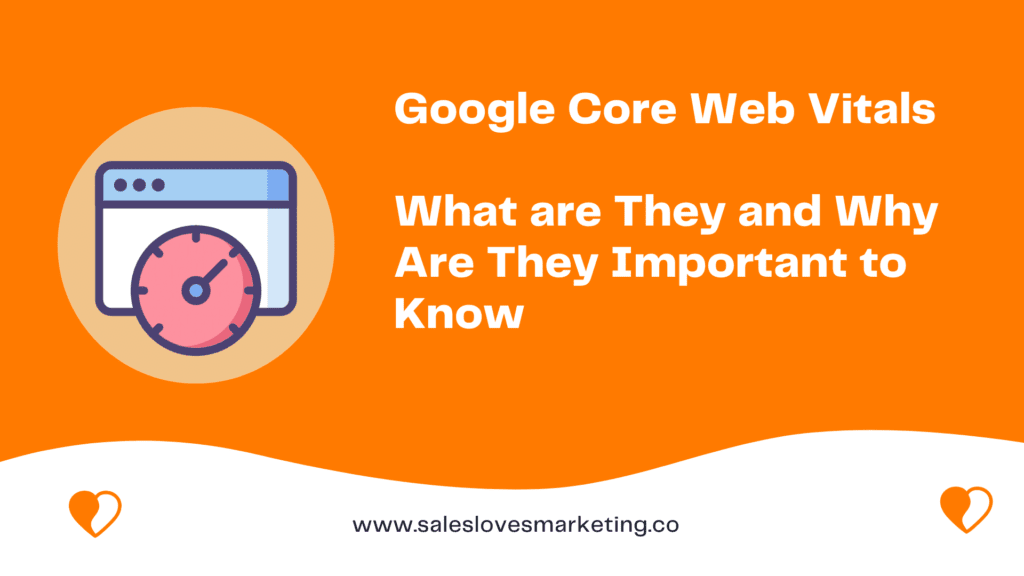If you are a website owner, you are more than familiar with the constant roller coaster of algorithm updates pushed out by Google every year and the kind of impact it can have on your website. As a result, it’s important to keep up with the latest algo related updates and the kind of impact they can have on your website.
It’s no question that you need to have killer content to retain and attract user attention and thanks to Google, you now have insights into the metrics that will help you improve user experience on your website.
The metrics are called core web vitals and are an initiative released by Google to help provide guidance for website owners for the type of quality signals that are essential to improving user experience on the web. Not only that, but they can help you improve components on your website that you may not have known were impacting user experience.
Google core web vitals can help you gain a deeper understanding into the type of content which produces a high-quality experience for your users. So, let’s dive in and find out what these metrics are and how you can use them to improve user experience on your website.
What are Core Web Vitals?
Google’s core web vitals consist of three specific page speed factors and user interaction measurements.

Page Speed Factors and User Interaction Measurements
The three-page speed and user interaction metrics are:
- Largest Contentful Paint (LCP) measures a web page loading performance. To provide a solid user experience, the LCP should occur within 2.5 seconds of when the page first begins to load in the browser. The LCP is considered the main web page loading factor for core web vitals.
- First Input Delay (FID) measures user interactivity. To provide a good user experience, web pages should have an FID of 100 milliseconds or less.
- Cumulative Layout Shift (CLS) measures your web pages visual stability. If elements on your page move around as the page loads, then you have a high CLS which is a negative. A good user experience is considered when your page maintains a CLS of .10 or less.
For your website to receive a passing score through the Google web core vitals, 75% of your page loads should fall within the metrics across desktop users and mobile users. This will help to improve your overall user experience on your website and has the possibility to help push your web page rankings higher.
Why are Core Web Vitals Important?
Core web vitals are important elements for a good user experience.
Each one of the core web vitals is a representation of the user experience and can have a critical impact on how long a website visitor stays on your pages and how they interact with them.
They can also carry weight on your website’s ability to rank higher in the SERP’s.
As a result, it’s important for website owners to understand how to measure core web vitals, understand them and improve them to have a healthy running site.
These metrics will naturally evolve and change as Google pushes further algorithm updates, so it’s important to become comfortable and familiar with how they work and the impact they can have on your website.
Measuring Web Core Vitals
There are multiple ways you can measure your core web vitals. The sources below allow you to run full-scale reports on your website and on individual pages.
Each resource is slightly different in how the data is displayed, but the most important part is that they all allow you to view the LCP, FID and CLS. They feature all the relevant information you need to understand where you need to make improvements on your website to pass core web vitals.
Page Speed Insights
Page speed insights will provide you with a very detailed breakdown of the core web vitals for a specific page and tell you what you need to improve to pass them. See the sample below.

To pass core web vitals it’s recommended that you try to be in the green for your web page. Below are additional improvements you can make to get an even better score.

As you can see below are the outlined web page opportunities for improvement you can make on your webpage to improve your score.
They include:
- Reducing initial server response time
- Eliminate render-blocking resources
- Avoid multiple page redirects
It’s worth noting that your web core vitals will vary between different pages on your website and as such it’s recommended that you have a standard publishing format to get a consistent score across the majority of your pages.
